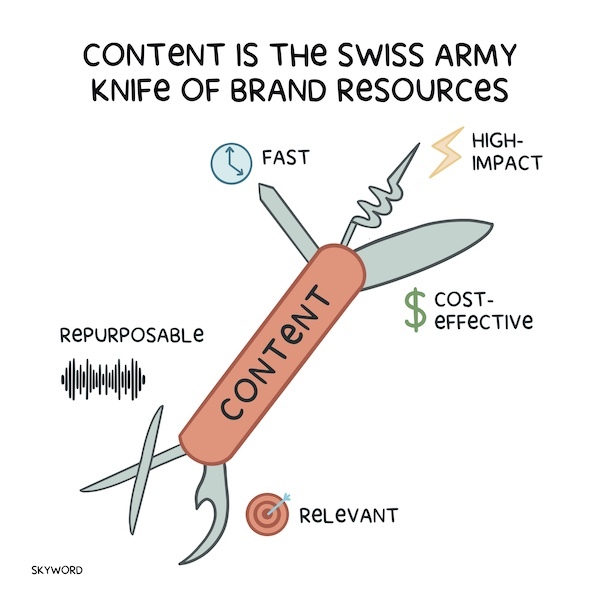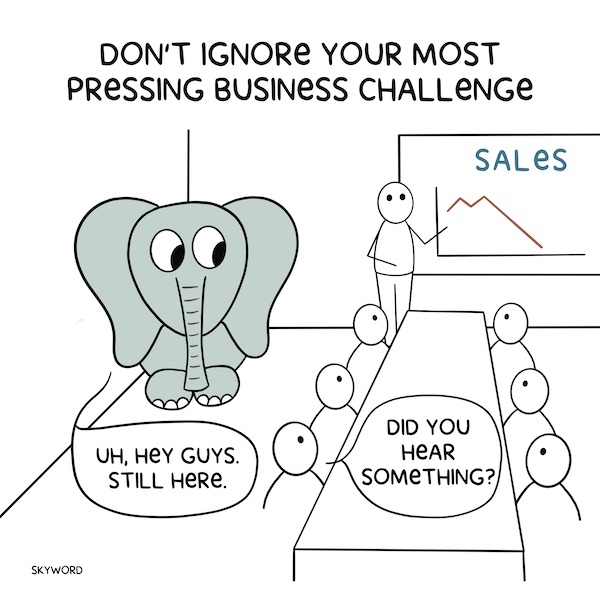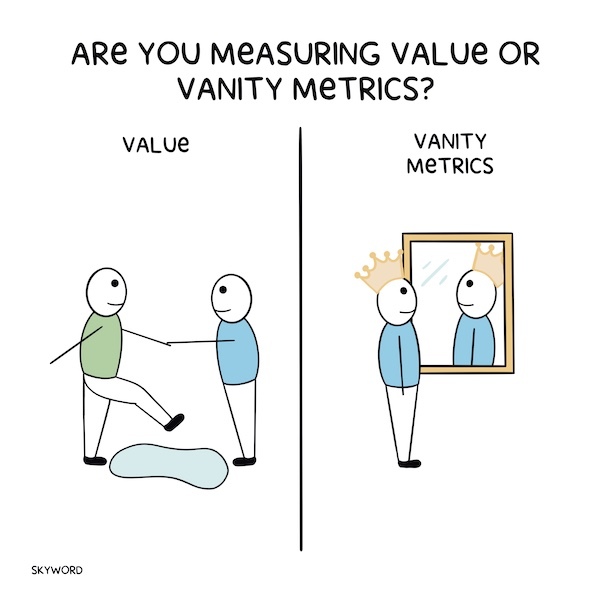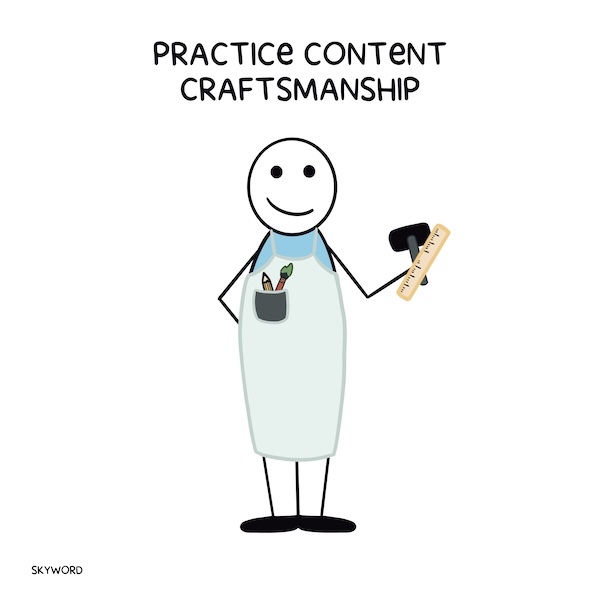Content Creation
3 Questions to End Strategic Drift in Marketing
By Andrew Wheeler on August 5, 2022
Subscribe to our monthly newsletter, Content & Context, to receive more insights and updates on the content marketing world from Skyword CEO, Andrew C. Wheeler.
Entering the end-of-year sales sprint, we're faced with the fact that corrective measures like hiring new reps, transforming our websites, or targeting new customer segments aren't likely to bear fruit before 2023.
This is when we, as marketers, are doubly challenged to address sales bottlenecks and bolster what's working as quickly and cost-effectively as possible.
Typically, this is also when more stakeholders start asking, "How can we do more with less?"
I would argue that the question we should steer them towards, instead, is "What are the one or two things we can do that will have the biggest possible impact?"
Last month, I mentioned that content is your brand's most adaptable marketing resource. Now, I encourage you to exploit that by considering:
-
How you can adapt the context of your content to give your product messaging more immediate relevance.
-
Which content you can repurpose or re-stage to better support both on and offline sales.
-
What content you could amplify to trigger an instant lift in leads.
-
What new content you need to fill critical gaps in your sales funnel.

With the clock ticking, the best value you can provide your business is knowing where and how to focus your efforts for the greatest return both now and into the new year.
These three questions will help you get more surgical and craft marketing content for the "now" that your business and customers are operating in.
1. Is content being used to address our most pressing business challenge?
This question helps to pinpoint which areas of the business to prioritize supporting if—like most marketers—you don't have the luxury of doing it all.
As a baseline, continuous content production is essential to growing your audience, but it's wise not to get false confidence from healthy traffic. So don't just look at what's working, look for what has slowed down or prevented sales from flowing at an optimal clip.
For example, maybe current economic pressure has made your sales cycle much longer over the last couple of quarters. That's a strong signal that you need to double down on assets that address new stakeholders' concerns and ensure that the right testimonials, case studies, and ROI messaging are entering your customer journey early on.
Dig into your sales and retention numbers, your pipeline metrics, and the months remaining in the year to identify what's changed and where your business needs the biggest boost.

2. Are we marketing for the moment we are in?
While the first question helps pinpoint where the business needs you most, this question forces you to think about precisely what your customers need right now.
You want messaging contextualized for the moment, that creates urgency, and hits on all your customers' top-of-mind concerns. Keep in mind that—like your business—their mindset and priorities have shifted since you last planned your content calendar.
If you aren't already, this is the moment to bring real-time search data, social listening, and voice of the customer data into your content planning. Challenge your content partners to help identify the priorities, market factors, and cultural events that intersect with your business so that you seize on every opportunity to provide help.
ADP's Eye on Washington team stays on top of current legislation to keep HR and business leaders informed about the implications of the latest state and local regulations on their operations and employees. From GDPR to Covid to Roe v. Wade, the Eye on Washington team prompts the brand to deliver new suites of tailored information and tools when their customers need them most. Their brand is known and valued for maintaining this leading edge. That's content contextualized to create immediate value and long-term competitive advantage.
3. Are we measuring value delivered to the customer?
I'm a big believer in the quote, "What you measure is what you manage." Answering this third question keeps all your content activities focused on a) who the customer you're supporting is and b) what value means to them so that you're optimizing around what matters.

99.9% of the time, "value" equates to helping someone do something better or more easily than they could before. You don't want to get tunnel vision looking at engagement rates when what your customers really value is a faster path to checkout.
Case in point: years ago, Colgate set up their online Oral Care Center, which generated millions of monthly traffic views from SEO blogs. But it soon became clear that customers didn't just want oral health questions answered; they wanted quick access to the recommended treatment products. Colgate stopped focusing on overall traffic and optimized for flow-through behavior instead.
Consequently, they were one of the first brands that added contextualized product modules to their educational articles—eliminating the steps customers had to go through to buy the right product online. Point being, that because they measured and managed what their customers wanted, they stopped selling and got better at helping their customers buy.
Content Craftsmanship
No marketer ever sets out to run a content factory, but it can start to feel that way if you get so bogged down in production that you begin drifting away from business priorities.
I encourage you to try spending the remainder of the year in the disciplined pursuit of more meaningful outcomes from less effort.

Use these questions to eliminate wasted efforts, attack priority business areas with precision, and be a customer journey problem-solver. I call this content craftsmanship. And as marketers, our job is to apply this skill at scale.
P.S. As you plan your strategy, check out our latest research report on what consumers and B2B buyers want most out of your brand experience.
